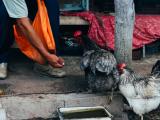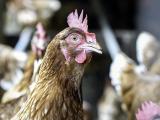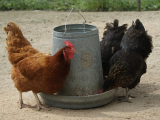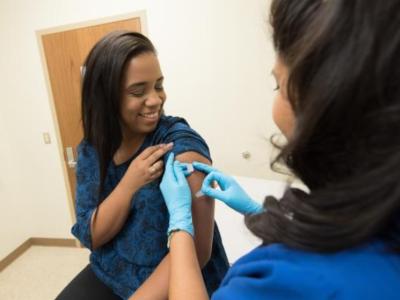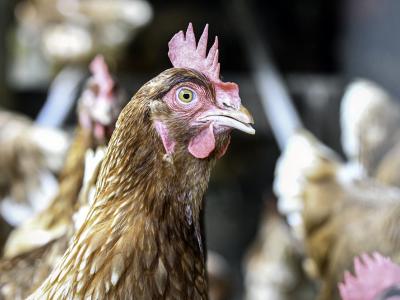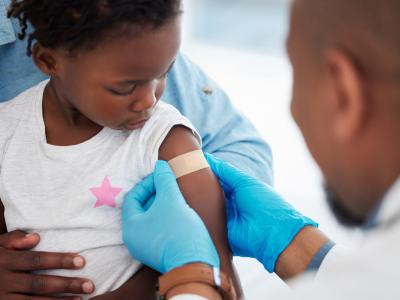Feb 20, 2004 (CIDRAP News) – The H5N1 avian influenza virus has killed two house cats in Thailand, but the event probably does not signal an increased threat to human health, the World Health Organization (WHO) said today.
Three cats that died in the same household were tested at Thailand's Kasetsart University, and two were positive for the H5N1 virus, the WHO reported. The virus has swept through poultry flocks in eight countries in East Asia and caused 31 confirmed human cases, 22 of them fatal.
The WHO called the cat cases "an unusual event in what is an historically unprecedented situation." But because the many poultry outbreaks already have spread the virus widely in the environment, infections in cats probably would not increase the virus's environmental presence significantly, the agency said.
The report of the feline cases came 4 days after news that the same virus had killed a clouded leopard and infected a tiger at a zoo near Bangkok. There were reports earlier this month that the virus had been found in pigs, but the United Nations Food and Agriculture Organization said no pigs had been infected.
The infected cats in Thailand came from a household where 14 of 15 cats have died and where the owner saw that one cat had contact with dead chickens, according to the WHO. A Reuters report said the house was near an infected chicken farm 40 miles west of Bangkok.
Although investigation of the cases is continuing, the WHO said, "Confirmation of H5N1 infection in cats is not considered likely to enhance the present risks to human health. Nor is it considered likely to influence the evolution of the outbreak in humans in any significant way."
Domestic cats have not been considered naturally susceptible to flu viruses up to now, the agency said. Studies have indicated that pigs, seals, whales, mink, and ferrets are susceptible to natural infection with purely avian flu viruses. But only pigs are significant for human health, because they can harbor both avian and human flu viruses, setting the stage for potential combination of the two to form a dangerous new strain.
Researchers in the 1970s and 1980s managed to infect cats experimentally with flu viruses, but the cats didn't get sick, the WHO said. "These findings are important in that they strongly suggest that, should additional cats become infected with H5N1, they would not shed large quantities of the virus," the agency said.
In the current poultry outbreaks, the virus grows in the intestines as well as the respiratory tract of birds, so that birds are spreading the virus in their droppings and causing widespread contamination, the WHO said. Since the virus is already abundant in the environment, the agency said, "Should domestic cats prove to be easily infected with H5N1, which is considered unlikely, their infection is not expected to contribute in a significant way to the presence of H5N1 virus in the environment."
The WHO said avian flu viruses lack the receptors needed to infect mammals efficiently. Human cases in the current and past H5N1 outbreaks show that bird-to-human transmission is possible, but the low number of cases "strongly suggests that transmission of H5N1 from birds to mammals, including cats as well as humans, is a rare event."
Also today, the WHO said authorities in Thailand are investigating 147 reports of patients with suspicious symptoms, including 21 labeled as "suspect cases" of H5N1 infection. All 21 patients had clinical pneumonia; eight have died, eight have recovered, and five remain hospitalized, the agency said.
In other developments, two new North American outbreaks of avian flu, neither of them H5N1, have been reported in the past 2 days. The Texas Animal Health Commission today reported an H5N2 outbreak in a chicken flock in Gonzales County. The virus appears to be a low-pathogenic strain that causes low mortality in chickens and poses no threat to humans, the commission said.
Texas is the fourth U.S. state to face an outbreak of avian flu in recent weeks. H7N2 outbreaks were reported at two chicken farms in Delaware and in four live-bird markets in New Jersey, and an H2N2 strain was found at a farm in Pennsylvania.
Yesterday the Canadian Food Inspection Agency reported an H7 influenza virus at a poultry farm in British Columbia. The agency said the risk to human health was low but didn't say whether the virus was considered low-pathogenic for poultry. The farm was quarantined and the 16,000 chickens were to be sacrificed.
See also:
Feb 20 WHO statement
http://www.who.int/csr/don/2004_02_20/en/
